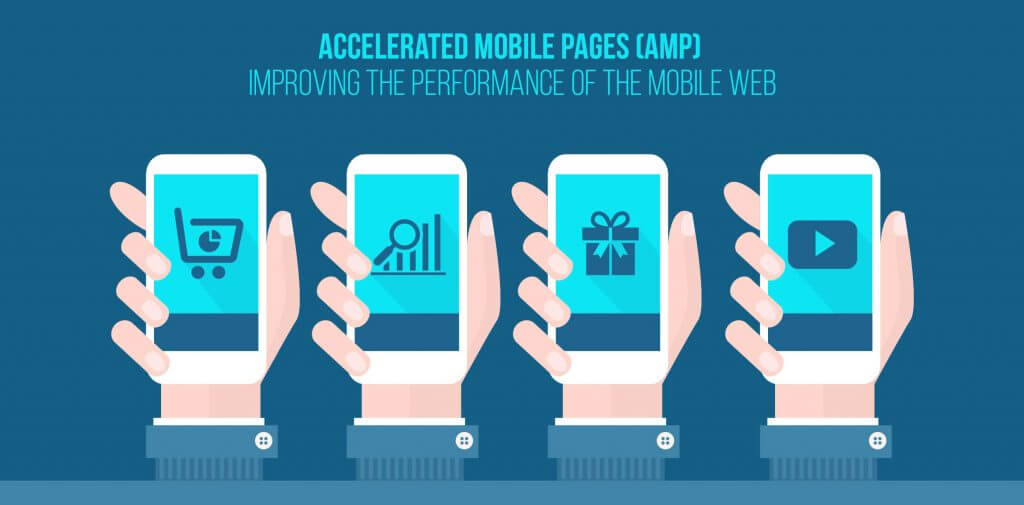I’ve been seeing stuff about Accelerated Mobile Pages – AMP everywhere, even my Adsense, so I decided to do more research, especially if it meant more revenue. Here’s what I found!
The Problem?
First, what are Accelerated Mobile Pages – AMP?
Accelerated Mobile Page (or AMP, for short) is a project from Google and Twitter designed to make really fast mobile pages.
The keyword here, is really fast. As in lightening fast.
Yeah, you have a website, I know, and you say it’s fast. But even 1 second of waiting can make a potential visitor leave your website, so why risk it?
New research by Google has found that 53% of mobile website visitors will leave if a webpage doesn’t load within three seconds.
But my website is already optimized for mobile, you say. Yeah cool. However, if the mobile browser pages aren’t loading quickly, that’s a hiccup that can discourage users from enjoying your content.
The Solution?
This is where Accelerated Mobile Pages – AMP comes in.

Accelerated Mobile Pages (AMPs) are a set of protocols you can use to restructure your site, and make it easier to be loaded and viewed on a mobile device. At first glance, you might confuse this with simply making your site “optimized for mobile devices,” but AMPs are a distinct concept.
Mobile-optimized pages are loadable and viewable in mobile devices, but AMPs are designed to load much faster, providing users with instantly available content. It’s similar to Facebook’s Instant Articles, but in the body of search results. — FORBES
This post about AMP will help further.
Speed and SEO
If you want to rank high on any search engine page, then you ought to know that speed is a very important factor. As quoted above, a 3 minute delay could cost you thousands, if not millions, depending on your traffic. There’s a significant correlation between site speed, page views and mobile search engine rankings.
SEO Best Practices. Google has indicated site speed (and as a result, page speed) is one of the signals used by its algorithm to rank pages. And research has shown that Google might be specifically measuring time to first byte as when it considers page speed. —
Recommended Reading: 5 Sure ways to Rank Higher in Search Engines
This is where having the AMP Plugin, if installed on your website can save your a**. Right now, you need speed on your site, and definitely before beauty, especially if it means some huge returns on sales, and yes, Adsense!
Let’s briefly check out some pros and cons of installing AMP.
Advantages of Accelerated Mobile Pages – AMP
As I stated above, there’s a significant correlation between site speed, page views and mobile search engine rankings.
- Fast web pages: Speed is the lifeblood of your mobile browser page. Great content is important, but, unless your pages are accessible, users won’t read them. AMPs load about twice as fast as a comparable mobile page, and have only one-tenth the latency. That’s an enormous speed advantage over traditional web pages!
Not all HTML code tags are executed, you use a streamlined version of CSS, and JavaScript is out of the question (mostly). It’s also 6x lighter in code.
- Visibility. AMPs give your site a boost in visibility. Currently, having a page with AMP protocols doesn’t increase your domain authority or page authority, but it does make that page eligible for the AMP carousel that rests above typical search results. Google has started displaying AMP results in organic listings. So imagine if your pages have AMP installed. Then you show up fast on Google!

Disadvantages?
- The downside to AMP is that no forms. That means for peeps who loooove opt in and subsciption forms, well… it may be difficult.
- Comments and other activities that users participate in when viewing your content on a mobile page may not be possible with AMP.
- Many websites thrive on user interactions, like click to tweet widgets, user ratings, comments, and so on. Google AMP makes it quite difficult for website owners to keep users engaged and interact with their content.
Neil’s post will explain more.
In Conclusion,
To get started with AMP – if you’re a WordPress user, then you just need to download and install the WordPress plugin.
So what if you’ve installed it, and you don’t want anymore? Then this might help you uninstall/disable it properly.
I should also add that AMP is still being developed, so it’s not at it’s final stage yet, so while AMPs could become a new standard, it’s not yet a necessity. The only exception is if you’re a publisher with a sizable audience already, and you need to remain competitive on a national scale.
So that’s it. Website Traffic is extremely important, which is why we are studying the various ways to speed up our websites, and rank high on search pages. AMP is wonderful, but still a baby. I personally would wait until it’s more of a toddler or a grown child, before converting ALL my pages to AMP. 🙂
Hope this helps.
Zee










